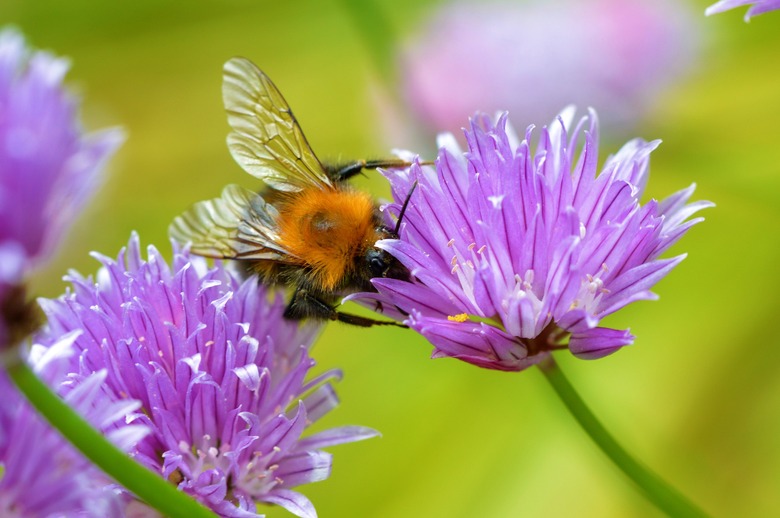Bee Brains: How These Insects Link Symbols To Numbers
Bees might just be the geniuses of insects.
That's no secret – we already knew they could grasp the concept of zero and do basic addition and subtraction. And now, according to a study published earlier this month from RMIT University, we have even more evidence of their genius: Bees can link symbols to numbers.
Why it's Impressive
Why it's Impressive
It's a "human-like ability," as the Independent calls it: Researchers have trained honeybees to match specific quantities with corresponding characters. For example, these insects can recognize that "two" could represent two hats, two bananas, or two trees. In other words, bees are able to learn that a symbol represents a numerical amount.
The same team of scientists from Australia and France who discovered bees' math-related capabilities uncovered this trait, as well, and published their study in Proceedings of the Royal Society B.
RMIT University Associate Professor Adrian Dyer said that humans may be the only species to have developed a numbers system, but that doesn't necessarily mean we are the only ones who can count.
"We take it for granted once we've learned our numbers as children, but being able to recognize what '4' represents actually requires a sophisticated level of cognitive ability," Dyer said in a publication from RMIT. "Studies have shown primates and birds can also learn to link symbols with numbers, but this is the first time we've seen this in insects."
How the Experiment Worked
How the Experiment Worked
Dr. Scarlett Howard, a former Ph.D. researcher at RMIT's Bio Inspired Digital Sensing-Lab, spearheaded the study in question. In a Y-shaped maze, Howard trained individual bees to correctly match characters with corresponding numbers of elements and tested whether they could apply that new knowledge to match each character to various elements of that quantity.
Howard trained a second group of bees on the opposite approach: matching a number of elements with a corresponding character.
Bees in both groups understood their specific training, but according to RMIT, they were unable to reverse the association (from character-to-number to number-to-character, for example).
"This suggests that number processing and understanding of symbols happens in different regions in bee brains, similar to the way separate processing happens in the human brain," Howard said in RMIT's publication.
Potential Impact on Future Science
Potential Impact on Future Science
Howard said that understanding how other animals' brains process and grasp complex numerical skills may help us understand how cultural and mathematical thinking evolved in humans, and potentially in other animals, as well.
Dyer added: "If bees have the capacity to learn something as complex as a human-made symbolic language, this opens up exciting new pathways for future communication across species."
Studies of insect brains could also have implications for designs of highly efficient computing systems, Dyer said.
"When we're looking for solutions to complex problems, we often find that nature has already done the job far more elegantly and efficiently," Dyer told RMIT. "Understanding how tiny bee brains manage information opens paths to bio-inspired solutions that use a fraction of the power of conventional processing systems."
Cite This Article
MLA
Swanston, Brenna. "Bee Brains: How These Insects Link Symbols To Numbers" sciencing.com, https://www.sciencing.com/bee-brains-how-these-insects-link-symbols-to-numbers-13719457/. 17 June 2019.
APA
Swanston, Brenna. (2019, June 17). Bee Brains: How These Insects Link Symbols To Numbers. sciencing.com. Retrieved from https://www.sciencing.com/bee-brains-how-these-insects-link-symbols-to-numbers-13719457/
Chicago
Swanston, Brenna. Bee Brains: How These Insects Link Symbols To Numbers last modified March 24, 2022. https://www.sciencing.com/bee-brains-how-these-insects-link-symbols-to-numbers-13719457/
